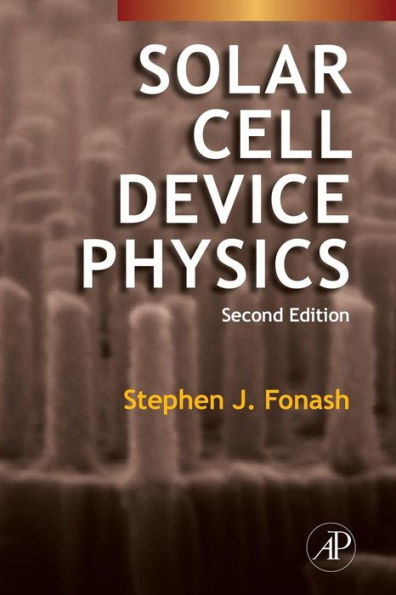The new edition of Dr. Stephen Fonash's definitive text points the way toward greater efficiency and cheaper production by adding coverage of cutting-edge topics in plasmonics, multi-exiton generation processes, nanostructures and nanomaterials such as quantum dots. The book's new structure improves readability by shifting many detailed equations to appendices, and balances the first edition's semiconductor coverage with an emphasis on thin-films. Further, it now demonstrates physical principles with simulations in the well-known AMPS computer code developed by the author.
- Classic text now updated with new advances in nanomaterials and thin films that point the way to cheaper, more efficient solar energy production
- Many of the detailed equations from the first edition have been shifted to appendices in order to improve readability
- Important theoretical points are now accompanied by concrete demonstrations via included simulations created with the well-known AMPS computer code
The new edition of Dr. Stephen Fonash's definitive text points the way toward greater efficiency and cheaper production by adding coverage of cutting-edge topics in plasmonics, multi-exiton generation processes, nanostructures and nanomaterials such as quantum dots. The book's new structure improves readability by shifting many detailed equations to appendices, and balances the first edition's semiconductor coverage with an emphasis on thin-films. Further, it now demonstrates physical principles with simulations in the well-known AMPS computer code developed by the author.
- Classic text now updated with new advances in nanomaterials and thin films that point the way to cheaper, more efficient solar energy production
- Many of the detailed equations from the first edition have been shifted to appendices in order to improve readability
- Important theoretical points are now accompanied by concrete demonstrations via included simulations created with the well-known AMPS computer code

Solar Cell Device Physics
400
Solar Cell Device Physics
400Paperback(2nd Revised ed.)
Related collections and offers

Product Details
| ISBN-13: | 9781493301133 |
|---|---|
| Publisher: | Elsevier Science |
| Publication date: | 04/30/2010 |
| Edition description: | 2nd Revised ed. |
| Pages: | 400 |
| Product dimensions: | 6.14(w) x 9.21(h) x 0.79(d) |
